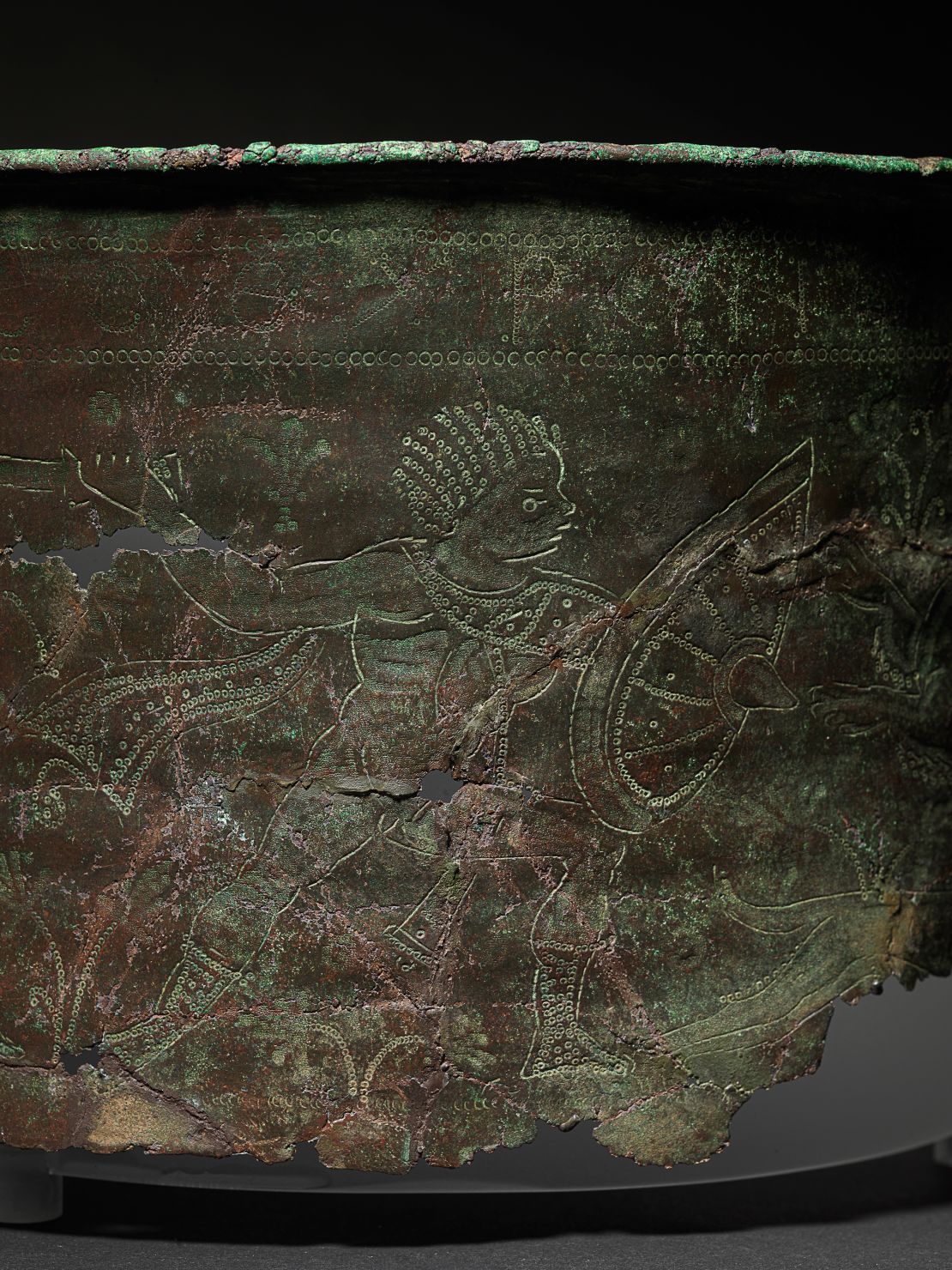Editor’s note: A version of this story appeared in CNN’s Wonder Theory science newsletter. To get it in your inbox, sign up for free here.
CNN
—
The human story became a bit more complicated about two decades ago.
In 2003, archaeologists excavating inside Liang Bua, a cave on the Indonesian island of Flores, found a tiny humanlike skull. More bones followed, and at first, archaeologist Thomas Sutikna and his team thought they had uncovered the ancient fossils of a child.
But the molar teeth belonged to an adult. As the researchers cleaned the specimen, they realized they were looking at a newfound kind of human who lived 60,000 years ago: Homo floresiensis.
The fossils have perplexed scientists ever since. But a new revelation sheds more light on how the diminutive human — nicknamed hobbit after J.R.R. Tolkien’s fictional characters — might have evolved.

A recent analysis of fossils belonging to Homo floresiensis found at the Mata Menge site on Flores supports the idea that the hobbits were a dwarfed version of the extinct species Homo erectus. And the newly studied fossils represent an earlier hobbit who was 2.4 inches (6.1 centimeters) shorter than the first specimen.
Homo erectus was the first ancient human to migrate out of Africa about 1.9 million years ago. Although Homo erectus had a gait and body size similar to modern humans, researchers think the species shrank in size over hundreds of thousands of years after becoming isolated on Flores.
An unearthed humerus bone is the smallest human limb bone ever found, and a digital analysis revealed it belonged to a roughly 3-foot-tall (nearly 100-centimeter tall) adult who likely lived 700,000 years ago.
Together, the Homo floresiensis fossils paint a portrait of a hardy species able to adapt and thrive despite the presence of hulking Komodo dragons.
Astronauts Butch Wilmore and Suni Williams have long outstayed a planned eight days in low-Earth orbit after traveling to the International Space Station aboard Boeing’s Starliner spacecraft in June. Now, the duo may need to remain on the station until February.
NASA is still trying to determine whether Starliner can safely return the astronauts to Earth, and if not, they may go home later aboard SpaceX’s Crew Dragon — which would mean two other astronauts would be booted from the planned Crew-9 mission flying to the station in September.
So how are Wilmore and Williams spending their time? They have joined in with the seven crew members on the station to assist with experiments and tech demos but have also had opportunities for some fun in microgravity.

Tantalizing pieces of an unfinished, ancient puzzle emerged after excavations where Anglo-Saxons buried their dead near Suffolk, England, during the sixth and seventh centuries.
In June, teams at the Sutton Hoo site carried out metal-detecting work and used ground-penetrating radar in an area called Garden Field and found more pieces of the Bromeswell bucket.
The sixth century Byzantine bucket, likely made in Turkey, depicts a North African hunting scene featuring warriors, lions and a hunting dog. Archaeologists previously found and pieced together fragments of the artifact during separate events in 1986 and 2012.
Egyptologists have long debated how ancient pyramids were built, with stones weighing hundreds of pounds, more than 4,000 years ago.
New research suggests that Egyptians may have used a hydraulic lift to float the massive blocks up through the middle of the Step Pyramid, erected for Pharaoh Djoser in the 27th century BC.
Egypt’s land was once a savannah, and its people may have directed water from ancient streams to create a complex water treatment system and a water-powered elevator in the pyramid’s internal shaft.
But some experts side with the theory that Egyptians used ramps and haulage devices to put the blocks in place, based on current evidence.

Fully assembled, NASA’s VIPER rover is virtually ready to seek out water ice at the lunar south pole that future astronauts could use — but there are concerns that the Volatiles Investigating Polar Exploration Rover will never reach its intended destination.
The US space agency recently canceled its plans to send the half-billion-dollar robotic explorer to the moon due to budget constraints.
Some lawmakers are petitioning NASA to save the rover, saying it could prove crucial to future US lunar ambitions.
But commercial companies are also vying for a chance to bid on the rover, save it and send it to the moon as planned.
Get up to speed with these surprising developments in space and science:
— An ancient pot of gold unearthed in Turkey hints at “gravest misfortune,” according to the leader of the expedition that found the hoard.
— A Long March 6A rocket that launched a constellation of satellites from China broke apart, creating debris that could affect satellites in low-Earth orbit.
— The heavy presence of fishermen in India’s Lakshadweep archipelago is scaring squaretail groupers away from courting potential mates, and the transition from flirty to flight could affect the fish population.
— Scientists have uncovered water and an “unknown lunar mineral” in soil samples collected from the moon by China’s Chang’e-5 probe.
Like what you’ve read? Oh, but there’s more. Sign up here to receive in your inbox the next edition of Wonder Theory, brought to you by CNN Space and Science writers Ashley Strickland and Katie Hunt. They find wonder in planets beyond our solar system and discoveries from the ancient world.

